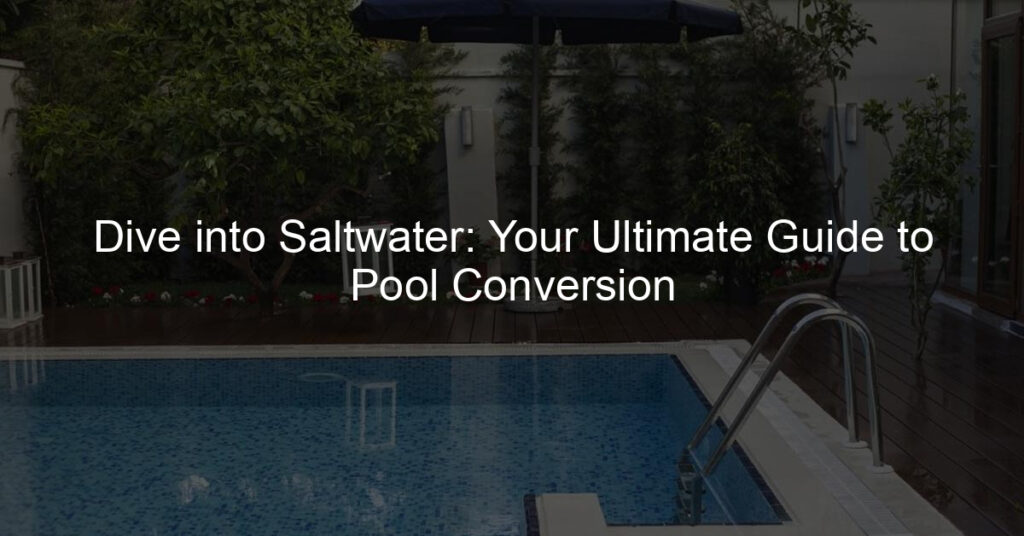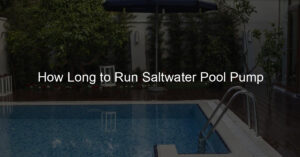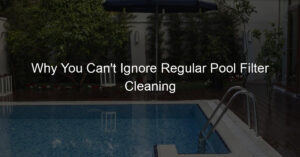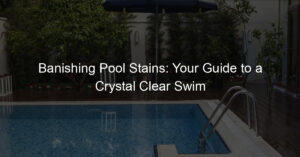Introduction to Saltwater Pools
Swimming pools are a great way to cool off during hot summer days. But have you ever heard of a saltwater pool? It’s a unique type of swimming pool that uses salt instead of traditional chlorine to keep the water clean. In this section, we will explore what saltwater pools are and the benefits they offer.
- Understanding the concept of saltwater pools
- Benefits of saltwater pools
A saltwater pool is not like swimming in the ocean. In fact, the salt level in a saltwater pool is much lower. The key to a saltwater pool is the saltwater generator. This device uses a process called electrolysis to produce chlorine from the salt in the water. The chlorine then works to sanitize the pool, keeping it clean and safe for swimming.
There are several benefits to having a saltwater pool. For one, they are gentler on the skin and eyes compared to traditional chlorine pools. This is because the chlorine levels are much lower. Saltwater pools also require less maintenance as the saltwater generator continuously produces chlorine. This means you don’t have to add chlorine to the pool as often. Additionally, saltwater pools can save you money in the long run as you don’t need to buy as much pool chemicals.
In the following sections, we will delve deeper into the process of converting a traditional pool into a saltwater pool, the costs involved, and the pros and cons of having a saltwater pool. So, keep reading to learn more about this interesting alternative to traditional swimming pools.
Saltwater Pool Benefits
When considering a pool for your home, you might have come across the term ‘saltwater pool’. But what exactly are the benefits of such a pool? Let’s delve into the key advantages of owning a saltwater pool.
- Reduced Chemical Usage
- Comfortable Water Feel
- Lower Long-Term Costs
One of the most significant benefits of a saltwater pool is the reduced need for chemicals. Traditional chlorine pools require constant monitoring and addition of chemicals to maintain a safe and clean environment. However, saltwater pools use a process called electrolysis to produce natural chlorine. This means you won’t have to handle or store hazardous chemicals, making it a safer choice for families, especially those with children.
Another advantage of saltwater pools is the comfortable water feel. Unlike traditional pools, saltwater pools don’t leave your skin feeling dry or itchy. The salt content in the water is similar to that of human tears, making it gentler on the skin and eyes. This makes swimming in a saltwater pool a more enjoyable and comfortable experience.
While the initial cost of installing a saltwater pool can be higher than a traditional chlorine pool, the long-term costs are generally lower. This is because saltwater pools require fewer chemicals and less maintenance, saving you money over time. According to a case study, homeowners can save up to 50% on pool maintenance costs with a saltwater pool. So, while the upfront cost might be higher, the long-term savings make it a cost-effective choice for many homeowners.
In conclusion, saltwater pools offer numerous benefits, from reduced chemical usage and a comfortable water feel to lower long-term costs. These advantages make them a popular choice for homeowners looking for a safer, more comfortable, and cost-effective swimming pool option.
Pool Conversion Process
Converting your traditional chlorine pool into a saltwater pool can be a rewarding decision. It involves a series of steps to ensure a smooth transition. Let’s break down the process into four main steps:
- Assessing Your Current Pool
- Choosing the Right Saltwater System
- Installation of the Saltwater System
- Adding Salt and Adjusting Levels
Before you begin the conversion process, it’s important to assess the current condition of your pool. This includes checking the pool’s structure, plumbing, and equipment. If your pool is in poor condition, you may need to make repairs or upgrades before proceeding with the conversion. It’s also important to test the water’s chemical balance. This will give you a baseline to work from when you begin the conversion process.
There are many different saltwater systems available on the market, and choosing the right one for your pool can be a daunting task. You’ll need to consider factors such as the size of your pool, the climate in your area, and your budget. Some saltwater systems are more suitable for larger pools, while others are designed for smaller pools. It’s also important to choose a system that is durable and easy to maintain.
Once you’ve chosen the right saltwater system, the next step is to install it. This involves replacing your pool’s existing chlorine generator with a saltwater generator. The installation process can be complex, so it’s often best to hire a professional to do it. However, if you’re handy and comfortable with DIY projects, you may be able to install the system yourself. Just make sure to follow the manufacturer’s instructions carefully.
After the saltwater system is installed, the next step is to add salt to your pool and adjust the levels. The amount of salt you’ll need will depend on the size of your pool and the type of saltwater system you’ve chosen. Once the salt is added, you’ll need to adjust the levels of other chemicals in your pool, such as the pH and alkalinity. This is crucial to maintaining the health and longevity of your saltwater pool.
In conclusion, converting your pool to a saltwater system can be a rewarding process. It requires careful planning and execution, but the benefits are well worth the effort. With a saltwater pool, you’ll enjoy a more natural and comfortable swimming experience, and you’ll spend less time and money on pool maintenance.
Saltwater Pool Maintenance
Maintaining a saltwater pool is not as daunting as it may seem. With a few simple steps, you can keep your pool in top-notch condition. Here are three key aspects of saltwater pool maintenance that you should focus on:
- Regularly Testing Water
Testing your pool water is a crucial part of maintaining a saltwater pool. Regular testing helps you keep track of the chemical balance in your pool. This balance is important because it affects the water’s clarity and can impact the comfort of those using the pool. You should test your pool water at least once a week. This will help you ensure that the pH, alkalinity, and chlorine levels are within the recommended ranges.
- Cleaning the Salt Cell
The salt cell in your saltwater pool is responsible for converting salt into chlorine. Over time, calcium deposits can build up on the salt cell, reducing its effectiveness. Therefore, it’s important to clean the salt cell regularly. A good rule of thumb is to clean it every three months. However, if your pool has a self-cleaning salt cell, you may only need to clean it once a year.
- Maintaining Proper Salt Levels
Maintaining the right salt levels in your pool is essential for the salt cell to work effectively. If the salt level is too low, the salt cell won’t be able to produce enough chlorine to keep the water clean. On the other hand, if the salt level is too high, it can cause damage to the pool equipment. The ideal salt level for most saltwater pools is between 2700 and 3400 parts per million (ppm). You can check the salt level using a salt test kit.
In conclusion, regular testing of water, cleaning the salt cell, and maintaining proper salt levels are key to maintaining a healthy and clean saltwater pool. By following these steps, you can enjoy a refreshing and safe swimming experience.
Cost of Saltwater Pool Conversion
Converting your traditional chlorine pool into a saltwater pool is a significant decision. It’s essential to consider the costs involved. In this section, we will discuss the initial costs, the long-term savings, and how these costs compare to maintaining a traditional chlorine pool.
- Initial Costs
- Long-term Savings
- Comparing Costs with Traditional Chlorine Pools
The initial cost of converting to a saltwater pool can be quite high. You will need to purchase a saltwater system, which can range from $500 to $2,500 depending on its size and features. Additionally, you may need to hire a professional for the installation, which can add another $500 to $1,000 to your initial costs. However, these costs are a one-time investment and can lead to significant savings in the long run.
Despite the high initial costs, a saltwater pool can be more economical in the long run. Unlike traditional chlorine pools, saltwater pools require less maintenance and fewer chemicals, which can save you around $100 to $300 annually. Over time, these savings can offset the initial costs of conversion.
When comparing the costs of a saltwater pool to a traditional chlorine pool, it’s important to consider both the initial investment and the ongoing maintenance costs. While the initial cost of a saltwater pool is higher, the annual maintenance costs are significantly lower. Over a period of 10 years, a saltwater pool could save you as much as $2,000 to $3,000 compared to a traditional chlorine pool.
In conclusion, while the initial cost of converting to a saltwater pool can be high, the long-term savings make it a worthwhile investment. Not only can you save money on maintenance and chemicals, but you can also enjoy the many benefits of a saltwater pool, such as softer water and less irritation to the eyes and skin.
DIY Saltwater Pool Conversion
Converting your traditional chlorine pool into a saltwater pool can seem daunting. However, with the right information and a step-by-step guide, you can do it yourself. This section will guide you through the process of a DIY saltwater pool conversion.
Saltwater Pool Conversion Steps
Here are the three main steps involved in converting your pool into a saltwater pool:
- Choosing the right saltwater system
- Installation of the saltwater system
- Adding salt and adjusting levels
There are several saltwater systems available in the market, and choosing the right one is crucial. You need to consider factors such as the size of your pool, your budget, and the system’s maintenance requirements. A good saltwater system should be efficient, easy to maintain, and durable. It’s advisable to research and compare different systems before making a decision.
Once you’ve chosen the right saltwater system, the next step is installation. This involves replacing your pool’s chlorine generator with a saltwater generator. The process may vary depending on the type of system you’ve chosen. However, most systems come with a detailed installation guide. Ensure to follow the instructions carefully to avoid any mishaps.
The final step in the conversion process is adding salt to your pool and adjusting the levels. The amount of salt required will depend on the size of your pool and the manufacturer’s instructions. After adding the salt, you’ll need to adjust the levels to achieve the right salinity. This is usually between 2700 and 3400 parts per million (ppm). It’s important to regularly test and adjust the salt levels to maintain the right balance.
Converting your pool into a saltwater pool can be a rewarding DIY project. Not only will you save on the cost of hiring a professional, but you’ll also gain a better understanding of how your pool works. Remember, patience and attention to detail are key to a successful conversion.
| Steps | Description |
|---|---|
| Choosing the right saltwater system | Research and compare different systems based on your pool size, budget, and maintenance requirements. |
| Installation of the saltwater system | Replace your pool’s chlorine generator with a saltwater generator following the manufacturer’s instructions. |
| Adding salt and adjusting levels | Add salt to your pool and adjust the levels to achieve the right salinity (usually between 2700 and 3400 ppm). |
Chlorine to Saltwater Pool Conversion
Converting a chlorine pool to a saltwater pool is a decision that many pool owners contemplate. This section will help you understand the process and weigh the pros and cons of such a conversion.
- Understanding the process
- Pros and cons of conversion
Converting a chlorine pool to a saltwater pool involves several steps. First, the pool is drained and thoroughly cleaned. Then, a saltwater chlorinator, also known as a salt cell, is installed into the pool’s existing filtration system. This device uses a process called electrolysis to convert salt into chlorine, keeping the pool clean and sanitized. The pool is then refilled, and salt is added. The saltwater system will begin to produce chlorine, and the pool’s chemical levels will need to be regularly monitored and adjusted.
There are several advantages to converting a chlorine pool to a saltwater pool. Saltwater pools are gentler on the skin and eyes, do not have a strong chlorine smell, and require less maintenance than traditional chlorine pools. They also provide a more comfortable swimming experience.
However, there are also some drawbacks to consider. The initial cost of installing a saltwater system can be high, and the salt can cause damage to certain types of pool equipment and finishes. Additionally, while saltwater pools require less day-to-day maintenance, they can be more complex to manage in terms of water chemistry.
In conclusion, converting a chlorine pool to a saltwater pool is a significant decision that should be made after careful consideration of the pros and cons. It’s important to understand the process and what it entails, as well as the potential benefits and drawbacks.
Saltwater Pool System Installation
Installing a saltwater pool system is a significant step towards enjoying a refreshing, low-maintenance swimming experience. This section will guide you through the process, from choosing the right system to the post-installation checks. Let’s dive in!
- Choosing the Right System
- Installation Process
- Post-Installation Checks
Choosing the right saltwater system for your pool is crucial. You need to consider the size of your pool, the type of pool (in-ground or above-ground), and your budget. The system should be able to generate enough chlorine to keep the pool clean and safe. For instance, a pool that holds 20,000 gallons of water requires a system that can generate at least 0.83 pounds of chlorine per day.
The installation process of a saltwater system involves several steps. First, you need to install the salt cell, which is the part of the system that generates chlorine. This is usually installed in the pool’s return line, after the filter and heater. Next, you install the control box, which allows you to adjust the chlorine levels and other settings. Finally, you add the salt to the pool. The amount of salt required depends on the size of your pool, but a good rule of thumb is to add 50 pounds of salt for every 2,000 gallons of water.
After the installation, it’s important to check that the system is working properly. You should test the water to ensure the chlorine and salt levels are correct. The ideal chlorine level is between 1.0 and 3.0 parts per million (ppm), and the ideal salt level is between 2700 and 3400 ppm. If the levels are too high or too low, you can adjust them using the control box. Additionally, you should check for leaks in the salt cell and the connections to the pool’s plumbing.
Remember, installing a saltwater pool system is a big job, but with careful planning and attention to detail, you can enjoy a clean, comfortable pool with less maintenance and fewer chemicals. Happy swimming!
Pros and Cons of Saltwater Pools
When it comes to choosing a pool, one must consider various factors. One of the most popular choices today is the saltwater pool. Like any other option, saltwater pools have their advantages and disadvantages. Let’s explore them.
- Advantages of Saltwater Pools
- Less Chlorine Exposure: Saltwater pools use a process called electrolysis to produce just enough chlorine to disinfect the water. This means less exposure to harsh chlorine, which can cause skin and eye irritation.
- Lower Maintenance: Unlike traditional pools that require regular addition of chlorine, saltwater pools require less maintenance as the salt cell produces chlorine as needed.
- Cost-Effective: Although the initial cost of installing a saltwater pool can be high, the ongoing costs are lower as you don’t need to buy chlorine regularly.
- Comfortable Swim: Many swimmers find that saltwater pools feel better on their skin and eyes. The water is softer and doesn’t have the strong chlorine smell associated with traditional pools.
- Disadvantages of Saltwater Pools
- High Initial Cost: The upfront cost of installing a saltwater pool can be significantly higher than a traditional chlorine pool due to the need for a salt-chlorine generator.
- Complexity of System: Saltwater pools are more complex and may require professional help for maintenance and troubleshooting.
- Potential for Corrosion: Salt can cause corrosion of pool equipment and certain types of pool finishes over time.
- Energy Use: The salt-chlorine generator needs to run for several hours a day, which can increase your energy costs.
Saltwater pools are known for their numerous benefits, which make them a favorite among homeowners. Here are some of the key advantages:
Despite the advantages, there are also some drawbacks to consider when thinking about a saltwater pool:
In conclusion, while saltwater pools offer a range of benefits, they also come with certain drawbacks. It’s important to weigh these pros and cons before making a decision.
Saltwater Pool Conversion Kit
When it comes to converting your chlorine pool into a saltwater pool, a saltwater pool conversion kit is your best friend. This kit contains everything you need to make the conversion process as smooth as possible. Let’s delve into what’s included in the kit and how to use it effectively.
- Understanding what’s included in the kit
- How to use the kit effectively
A saltwater pool conversion kit typically includes a saltwater chlorinator, a control unit, and a cell. The saltwater chlorinator is the heart of the system, responsible for converting salt into chlorine. The control unit allows you to adjust the chlorine levels, while the cell is where the actual conversion of salt to chlorine takes place.
Some kits may also include a saltwater test kit, which is used to measure the salt levels in your pool. This is important because maintaining the right salt concentration is crucial for the system to work properly.
Using a saltwater pool conversion kit effectively requires a few simple steps. First, you’ll need to install the chlorinator in your pool’s circulation system. This usually involves connecting it to your pool’s pump and filter system. The control unit should be mounted in a dry, shaded area near the pool.
Once the system is installed, you’ll need to add salt to your pool. The amount of salt required will depend on the size of your pool, but the average is around 50 pounds of salt for every 2,000 gallons of water. After adding the salt, you’ll need to wait for it to dissolve before turning on the chlorinator.
Finally, you’ll need to regularly test the salt levels in your pool using the test kit. If the salt concentration is too low, the system won’t be able to produce enough chlorine. If it’s too high, it could damage the chlorinator. Therefore, maintaining the right balance is key to using the kit effectively.
In conclusion, a saltwater pool conversion kit is a comprehensive package that provides all the necessary tools for converting your pool into a saltwater pool. By understanding what’s included in the kit and how to use it effectively, you can enjoy the benefits of a saltwater pool with ease.
Conclusion
- Recap of the benefits and process of pool conversion: Saltwater pools offer a plethora of benefits, including softer water, less maintenance, and a more enjoyable swimming experience. The process of pool conversion involves several steps, such as testing the current pool water, draining the pool, installing a saltwater system, and adding salt to the pool. It’s a process that may require professional assistance, but it’s also possible to do it yourself with the right tools and guidance.
- Final thoughts on saltwater pool conversion: Converting your pool to a saltwater system is a significant decision that should be made after careful consideration. While there are many benefits, it’s important to also consider the initial cost of conversion and ongoing maintenance. However, many pool owners find that the benefits outweigh the costs, and the improved swimming experience is worth the investment. Remember, the key to a successful pool conversion is proper planning, preparation, and maintenance.














